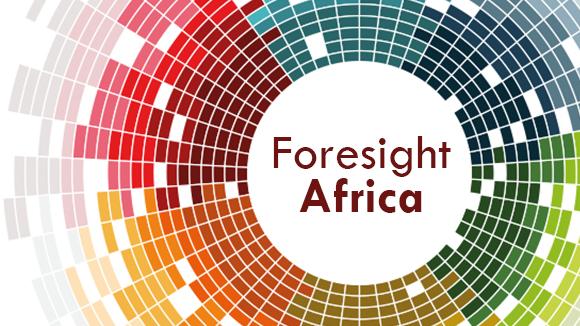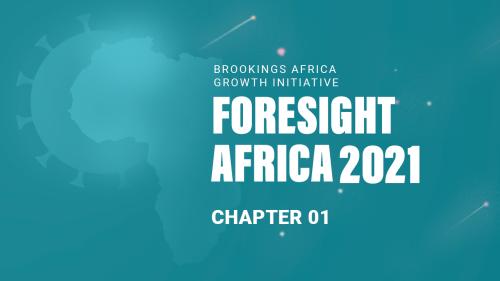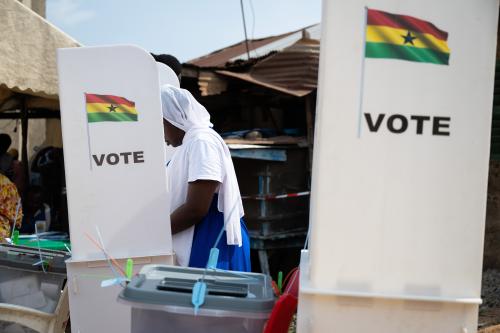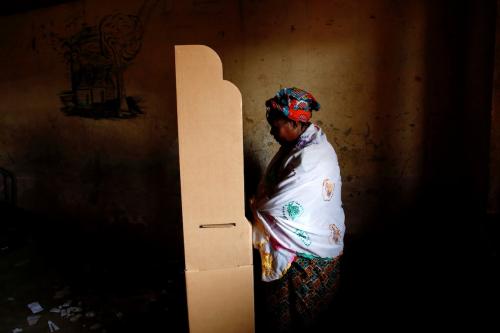Below is a Viewpoint from Chapter 1 of the Foresight Africa 2021 report, which explores top priorities for the region in the coming year. This year’s issue focuses on strategies for Africa to confront the twin health and economic crises created by the COVID-19 pandemic and emerge stronger than ever. Read the full chapter on the great reset.
 The COVID-19 pandemic has seen the widespread use of expansionary fiscal policies which, in terms of scale, is simply unprecedented. An estimated eye-watering $12 trillion of discretionary fiscal support has been provided globally during the pandemic. Such expenditure has come in the form of support to the unemployed, small businesses, and struggling sectors in an effort to save livelihoods and keep economies buoyant. Crucially, though, for many countries in sub-Saharan Africa, these fiscal stimuli packages have deepened their debt challenges.
The COVID-19 pandemic has seen the widespread use of expansionary fiscal policies which, in terms of scale, is simply unprecedented. An estimated eye-watering $12 trillion of discretionary fiscal support has been provided globally during the pandemic. Such expenditure has come in the form of support to the unemployed, small businesses, and struggling sectors in an effort to save livelihoods and keep economies buoyant. Crucially, though, for many countries in sub-Saharan Africa, these fiscal stimuli packages have deepened their debt challenges.
South Africa is one such example. Although the country’s pre-pandemic forecast for debt-to-GDP ratio for 2020 was already high at 65.6 percent, supporting the economy through the pandemic required the government to breach the spending ceiling and expand its borrowing—raising the forecasted debt-to-GDP ratio to 80.5 percent for 2020. The strain of higher debt can significantly damage a country’s long-run growth prospects: Indeed, a study by the World Bank found that in emerging markets, the loss of annual real growth is 0.02 percentage points for each percentage point over a 64 percent debt-to-GDP ratio.
So, after we recover from the health crisis, how do we recover from the economic damage? Stimulating economic recovery requires at least three key responses: strengthening confidence in South Africa’s ability to adhere to a fiscal consolidation path; improving the efficiency of expenditures; and, finally, strengthening revenue mobilization.
First, South Africa must restore confidence in its proposed fiscal consolidation path. Earlier this year, Moody’s downgrading left South Africa without an investment grade rating for the first time since the advent of its democracy. This move put pressure on domestic capital markets and reduced confidence in the South African economy, manifested in higher bond yields, exchange rate depreciation, and by extension, increased borrowing costs. As a result, the fiscal consolidation path presented in the most recent budget for 2020/2021 has been met with skepticism from the market.
Indeed, the President’s Economic Advisory Council noted that the fiscal consolidation path suggested by the government is neither desirable nor believable. South African authorities therefore must pursue and ultimately deliver on the proposed structural reforms of reducing the public wage bill in order to signal that they are serious about fiscal consolidation.
Second, critically, leaders must improve the efficiency of existing expenditure. Despite a rate of investment above the long-term rate, owing largely to significant public investment in state-owned enterprises, the efficiency of investment has deteriorated significantly. In fact, the average incremental capital output ratio (ICOR, which explains the relationship between the value of investments and the consequent increase in gross domestic product; the higher the ICOR, the lower the productivity of capital), was four times higher between 2012 and 2017 than the average between 2000 and 2010. And, when looking at the top 100 emerging and developing markets, South Africa’s ICOR now lags behind 82 percent of its peers, suggesting a growth in wastage, corruption, and inefficiency in spending by the fiscus.
Finally, the country must strengthen its revenue mobilization. Given the year of economic hardship for firms and households, it is not feasible to raise taxes. Even before the crisis, tax revenue shortfalls were a recurrent theme in South Africa. The National Treasury’s Budget Review 2020 noted that, although there have been large tax increases over the last five years, the gap between projected and collected revenue has continued to expand. Improving the efficiency of tax collection by building the capacity of the South African Revenue Service and strengthening policies to reduce fiscal leakages is, thus, key.
Although these broad policy recommendations have been explored in the South African context, they are central to stimulating growth across sub-Saharan Africa. While positive results from several vaccines have lifted hopes for an end to the pandemic, the economic recovery will be much longer and the transition from expansionary policies to fiscal consolidation is more important than ever.
The Brookings Institution is committed to quality, independence, and impact.
We are supported by a diverse array of funders. In line with our values and policies, each Brookings publication represents the sole views of its author(s).








Commentary
From stimulus to debt: The case of South Africa
February 2, 2021